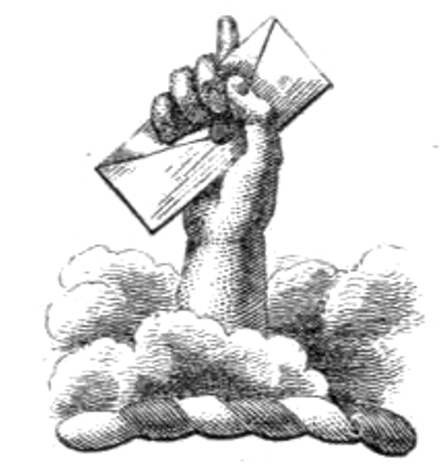
True Crime: Allan Pinkerton’s Thirty Years a Detective (1884)
Thirty Years a Detective weighs in at six hundred pages, with many, many stories of crime and vice. The subtitle is a decent summary: “A thorough and comprehensive exposé of criminal practices of all grades and classes, containing numerous episodes of personal experience in the detection of criminals, and covering a period of thirty years’ active detective life”. This is only one of detective Allan Pinkerton’s books — there are at least twelve others.
Thirty Years was published the same year Pinkerton died, 1884, and he was at that point a household name, so famous that “pinkerton” was slang for “private investigator”. He’d had an illustrious career, well covered by national newspapers. Born in Glasgow, Pinkerton had fled Scotland as a young man after he was told he’d be arrested for Chartist activist organizing; his father had been killed in a political demonstration.
In the US, he set up shop outside of Chicago as a maker of barrels, and offered his home to the underground railroad. But then, as a lark in his spare time, he exposed a sophisticated counterfeiting ring, such that he was recruited to the Chicago police force and quickly became the most successful investigator on staff.
Pinkerton occasionally took on freelance work — he had six children — and one gig made him friends with George McClellan, owner of a railroad company, and Abraham Lincoln, the railroad company’s lawyer. Lincoln, of course, became president, and McClellan commanding general of the Union Army; they hired their old friend Pinkerton to do Confederate espionage. He commanded two dozen undercover agents, some of whom, most unusually, were Black and some women, and he called himself “Chief of the United States Secret Service”. That agency didn’t yet exist, though it eventually would, thanks, in part, to Pinkerton.
 Scroll through the whole page to download all images before printing.
Scroll through the whole page to download all images before printing.Photograph of Allan Pinkerton, President Lincoln, and Maj. Gen. John A. McClernand taken in September or October 1862 at Antietam, Maryland, on the Eastern Theatre of the American Civil War — Source.
Thirty Years a Detective doesn’t mention Pinkerton’s Civil War work, which had ups and downs. He cleverly foiled an assassination plot on Lincoln, for instance, but he also supplied dubious intel that likely lengthened the war. One of his undercover detectives was exposed by two others, and hanged by the Confederates. When Lincoln canned McClellan, Pinkerton resigned and returned to his Chicago business, taking the logo of a disembodied eye above the slogan, “We Never Sleep”. It’s said that the agency he subsequently built served as the model for the FBI.
There’s no doubt that Pinkerton shaped the history of American vice, though the motley anecdotes collected in Thirty Years a Detective are mainly lighthearted curiosities, hijinks to entertain a group of chums at the bar. Pinkerton’s focus is the “how” of a crime, not the “why”. The book is a compendium of pragmatic details that only a detective would know: the delicate choreography of pickpocketing, the engineering of specialized burglars’ tools, the code words, the backroom money split. It’s a useful read for, say, a historical novelist, so long as she doesn’t expect insights into criminal psychology.
The anecdotes are grouped according to the type of crime, with each given its own chapter. There are sections on forgery, counterfeiting, blackmail, and a surprising variety of thieving techniques. Thieves who worked steamboats had different methods than those who worked train cars, hotels, or theaters. Bank robbers are a class above, and pickpockets a class below. Some thieves specialize in weddings, and others in funerals. Faked pregnancies are found in the “Confidence and Blackmail” chapter. There is no chapter on murder.
Arcane facts galore. When sleeping in a hotel, nineteenth-century Chicagoans kept their cash under their pillow, such that stealing it required preternatural silence. Wearing wool was quieter than wearing cotton.
The best pickpockets remove a woman’s wallet, sweep the contents, and then return it, so that when she pats her purse, nothing seems amiss. The industry term for this is “weeding the leather”. Pickpockets who target women are called “moll-buzzers”; pickpockets who target men are “bloke-buzzers”.
“American housebreakers”, Pinkerton reports, are “far more expert and daring” than their British counterparts. The Brits tend to work slowly, in careful, methodical groups, whereas the Americans are lone rangers, more impervious to fear.
 Scroll through the whole page to download all images before printing.
Scroll through the whole page to download all images before printing.“The thief, maintaining a stooping posture, springs for the clothing of the unsuspecting occupant. The reasons for adopting this stooping position or falling upon the knees is obvious, as every person in bed on being awakened suddenly, will naturally look up and not down. His movements are as rapid as the flash of the lightning, and as noiseless as the Indian on the trail” — Source.
There are ruses specific to robbing countrymen visiting the city, who are tempting marks because they carry a lot of cash, but tricky because they never stop touching their cash.
Burglars of the highest caliber are almost entirely unaffected by security upgrades, because they anticipate the upgrade and puzzle a workaround before it’s put in place.
Women are useful — for feigning distress, for seducing marks to distraction, for casing a home under cover of a domestic servant — though the downside, Pinkerton implies, is that they sometimes become morphine addicts.
If you tell a farmer you’re collecting signatures to cap the salaries of government employees, and you’re a smooth-talking confidence man, the farmer will sign almost anything, even the deed to his own land. This kind of swindle is called “the boodle game”.
 Scroll through the whole page to download all images before printing.
Scroll through the whole page to download all images before printing.“Here they charged the inner safes with powder and glycerine, and the explosion which followed was a terrific one. So great was the concussion that resulted from this, that the entire ceiling of the banking room was torn off, and fell to the floor with a crash, filling the room with a dense shower of bricks, dust and mortar. The watchers, who had been stationed outside, becoming alarmed at the noise, at once gave the signal for flight, and the men, fearful of their safety, beat a precipitate retreat. In those vaults and almost within their grasp, were four hundred thousand dollars in greenbacks, and a million and a half dollars in good marketable securities” — Source.
Pinkerton is especially fascinated by tools invented for specific criminal purposes. He provides diagrams, for instance, of a wooden device used to pop an interior lock through a transom window — safely hidden in a boot — and a non-mechanical drill strong enough to silently rip a hole in a steel safe. “Palm nippers” are tiny scissors for cutting jewelry off the wearer, and house burglars often carry a collapsible ladder, made to fit inside a handheld suitcase.
Copying keys is an art of its own. Many thieves can make an accurate-enough impression in a matter of seconds, using a dollop of wax in their pocket, but the truly expert criminal, Pinkerton reports, need not even touch the key. He can fabricate a dummy based on a mental picture. “The dexterity and ease with which it is done, is simply astonishing”, Pinkerton writes admiringly.
Sentences like this are everywhere in Thirty Years a Detective. Pinkerton expresses a great deal of esteem for the criminals he pursues, in the same way a hunter admires the elk he’s keen to kill. “How careful, how thorough”, Pinkerton raves of one crime after another. Various thieves are described as “gentlemanly and intelligent”, “exceedingly proficient”, and a “scientific and calculating man of the work”. The brilliance of the criminal bolsters the achievement of the detective, and makes for a fair fight. Pinkerton is more apt to call the target of a crime a “loser” than a “victim”.
The ostensible point of Thirty Years a Detective is to share information — a very different goal than the genre of “true crime”, the conventions of which were well known to Pinkerton’s readers. True crime held as much grip on the public imagination in Victorian times as it does today; grisly thrillers, cheaply printed on broadsheet, were sold at criminal executions, directly below the protagonist’s swinging feet. Pinkerton’s aims are much more virtuous, or so he claims. His goal is to prevent crime, to teach people the ins and outs of vice for their own protection.
The window-dressing doesn’t entirely hold up. If Pinkerton’s goal was a public safety alert, better to write something much shorter. Nonetheless, there are a few useful takeaways, the most salient of which is the preponderance of criminals who present as “dapper gentlemen of refined tastes”. In story after story, these “well-dressed” men project innocence through no effort of their own. It’s a supremely effective cover, and it makes for a prolific criminal.
The gentleman’s swindle is so efficacious it eventually worked on Pinkerton himself. Today, he’s mainly remembered as the namesake of the Pinkerton National Detective Agency, a nefarious global conglomerate known for its loyalty to the forces of global capital. The agency has a longstanding reputation as guns-for-hire, willing to crush strikes and protests, surveil employees, frame anarchists, infiltrate unions. As a young man, Pinkerton was on the side of the worker, yet the business he built aids and abets corporate overlords. He knew everything about crime there was to know, except the most consequential fact of all: power defines the criminal.
Dec 5, 2024






